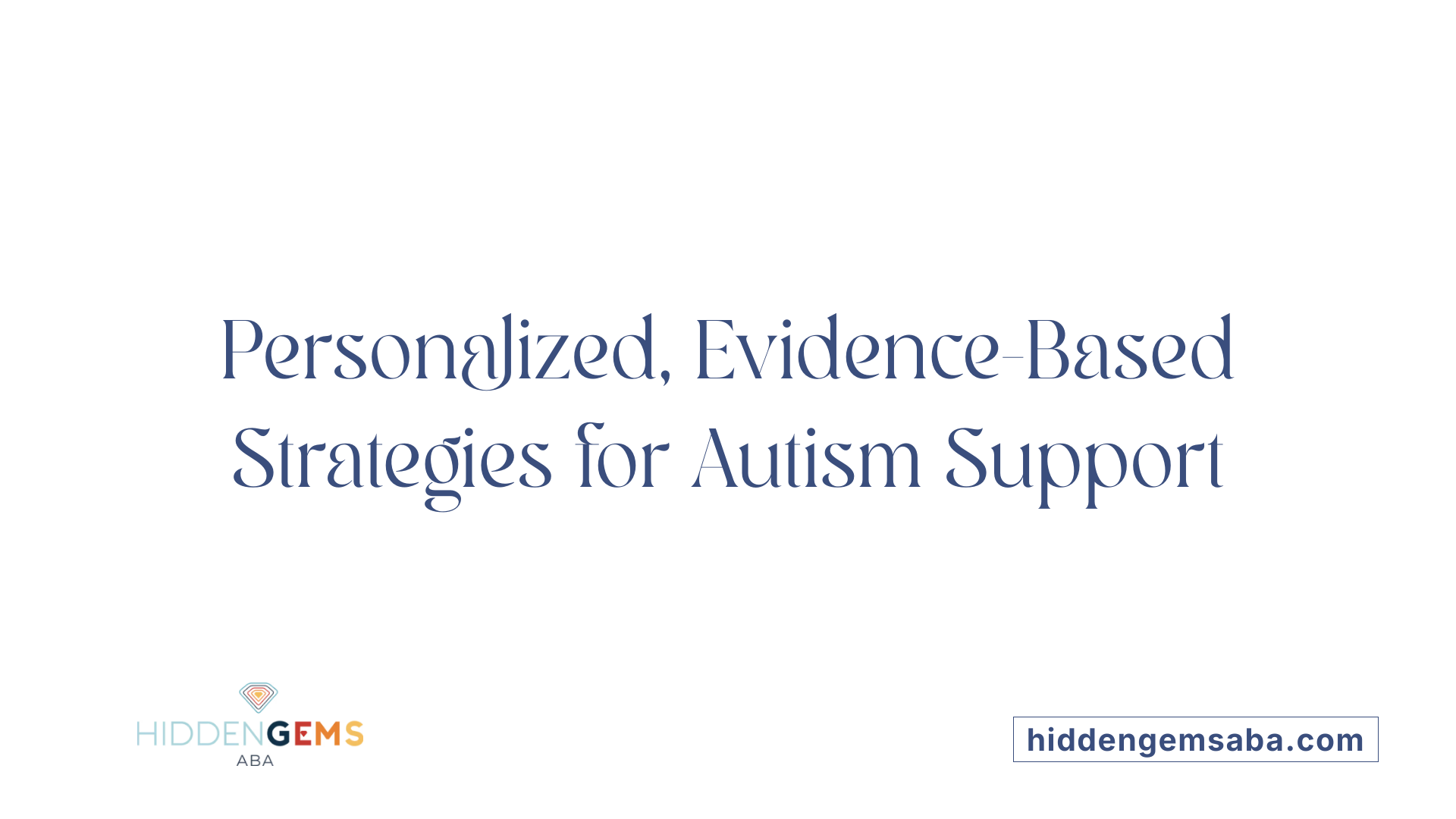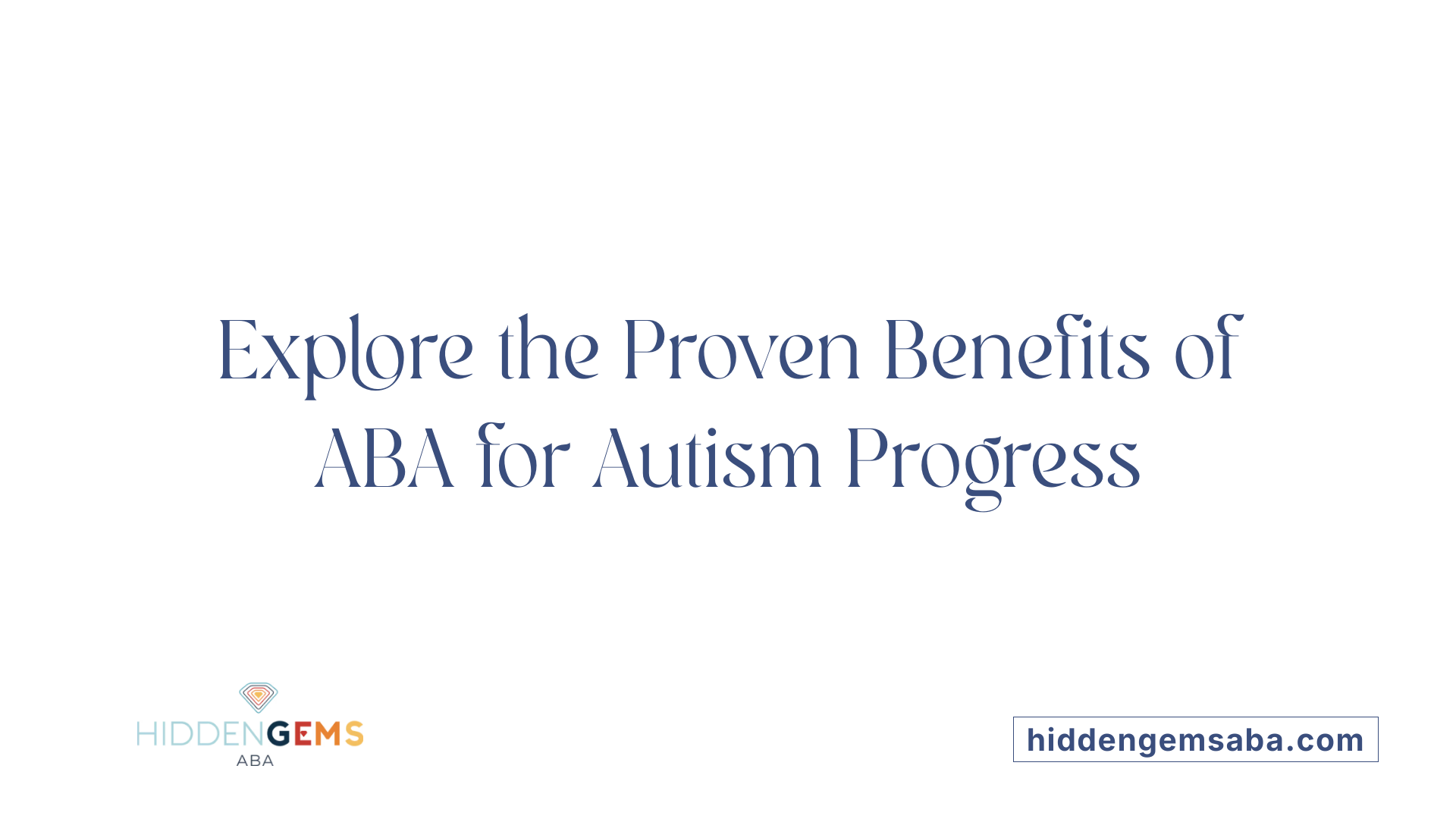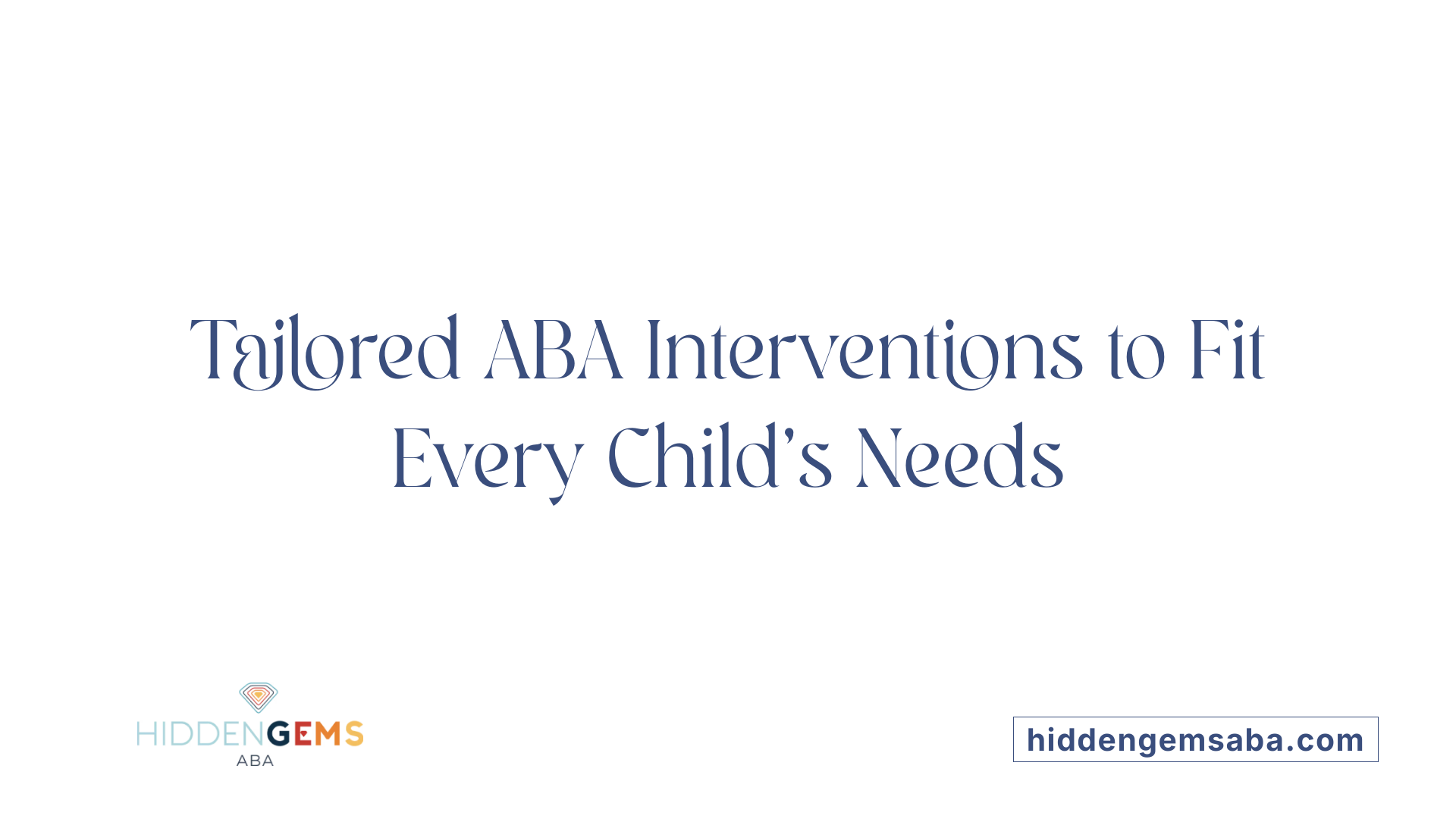Understanding the Foundations of ABA Therapy
Applied Behavior Analysis (ABA) is a scientifically grounded therapy designed specifically for individuals with autism spectrum disorder (ASD). Rooted in the principles of learning and behavior science, ABA aims to enhance helpful behaviors while decreasing those that hinder development. It utilizes proven techniques such as positive reinforcement, structured teaching methods, and naturalistic strategies to foster meaningful progress across various domains, including communication, social skills, and daily living. By tailoring interventions to each child's needs, ABA plays a pivotal role in supporting independence and improving quality of life.
What is ABA Therapy for Autism?

What is the ABA program for autism?
An ABA program for autism is a personalized, evidence-based therapy that applies the principles of learning and behavior science to help individuals develop useful skills and reduce problematic behaviors. It involves assessing the individual's needs, setting specific goals, and using techniques such as positive reinforcement to encourage desired behaviors like communication, social interaction, and daily living skills. The program is typically overseen by a trained behavior analyst (BCBA) who designs and monitors the intervention, which can be implemented in various settings including home, school, and community environments. Parents and caregivers are actively involved, often participating in training and data collection to support consistent reinforcement. Overall, ABA programs aim to improve quality of life by teaching adaptive skills and decreasing behaviors that interfere with learning and social participation.
How is ABA tailored to individual needs?
ABA therapy is highly flexible and customized for each person. Therapists start with a thorough assessment that includes behavioral observations, testing, and parent interviews. Based on this information, they develop a treatment plan focused on the child's specific challenges and strengths.
This personalized approach ensures that the therapy targets relevant behaviors and skills, whether it's improving language, attention, or social differences.
Therapies are adapted over time through ongoing progress monitoring. This adjustment guarantees that the intervention remains effective and aligned with the child's evolving needs.
What methods and techniques are used in ABA?
ABA employs a variety of methods designed to teach new skills and reduce harmful behaviors.
Key techniques include:
- Positive Reinforcement: Providing rewards or praise to encourage desired behaviors.
- Discrete Trial Training (DTT): Structured, step-by-step teaching in one-on-one settings, often used for foundational skills.
- Pivotal Response Treatment (PRT): Play-based, naturalistic intervention focusing on pivotal skills like motivation and initiation.
- Early Start Denver Model (ESDM): Combines play therapy with ABA techniques for young children.
Modern ABA has shifted towards play-based and child-centered approaches, making learning engaging and suited to the child's interests.
Overview of ABA programs and approaches
Many ABA programs involve assessments such as behavioral observations, parent interviews, and standardized tests. Based on these, therapists craft tailored strategies to promote social, communication, and adaptive skills.
Whether via structured DTT sessions or more naturalistic PRT, the goal remains to teach functional behaviors through positive reinforcement and prompting, without using punishment.
In summary, ABA is a versatile, scientifically grounded approach that helps children with autism increase independence, develop socially meaningful skills, and improve overall quality of life.
Effectiveness and Benefits of ABA Therapy

Is ABA therapy effective?
Research consistently demonstrates that intensive, long-term ABA therapy yields substantial improvements in children with autism. According to findings from various studies, children who undergo ABA tend to experience significant gains in areas such as intellectual functioning, language, social skills, and independence in daily activities.
Recent reviews by authoritative bodies, including the US Surgeon General and the American Psychological Association, recognize ABA as an evidence-based best practice. This means that ABA is supported by rigorous scientific evidence and is recommended as a primary intervention for autism spectrum disorder (ASD).
Furthermore, early and intensive ABA, defined as more than 20 hours per week before a child turns four, has been linked to larger developmental strides. These include enhanced communication abilities, improved social engagement, and reductions in challenging behaviors. Such early investments can also diminish the need for additional services later in life.
What are the benefits of ABA?
ABA therapy offers a broad range of benefits tailored to each child's needs. Its core focus is on increasing beneficial behaviors and decreasing problematic ones.
Children undergoing ABA often show improvements in language and communication, helping them express their needs and participate more fully in social interactions. In addition, ABA helps develop attention span, focus, memory, and academic skills.
One of the most significant advantages of ABA is its ability to foster independence. By teaching functional skills, children are better prepared to navigate everyday life and community environments.
Studies have documented that ABA can positively influence socialization skills, expressive language, and cognitive development. It also addresses challenging behaviors through reinforcement strategies, teaching children alternative, appropriate behaviors.
In summary, ABA’s personalized, data-driven approach supports children with autism in reaching their full potential, making it a highly effective therapy backed by scientific evidence.
| Aspect | Improvement Areas | Summary Example |
|---|---|---|
| Scientific Backing | Effectiveness validated by studies and organizations | Recognized by US Surgeon General and APA as evidence-based |
| Child Outcomes | Language, social, cognitive, and daily skills | Gains in communication, independence, and social skills |
| Early Intervention | Maximize developmental gains early | More than 20 hours/week before age 4 enhances growth |
| Behavior Changes | Reduce harmful behaviors, teach positive ones | Less aggression, better social interaction |
Accessing and Implementing ABA Services
 How can I find reputable ABA providers?
How can I find reputable ABA providers?
Finding a trustworthy ABA provider begins with seeking out qualified professionals, such as Board Certified Behavior Analysts (BCBAs). These specialists design and oversee individualized treatment plans rooted in behavioral science. It’s important to verify their credentials, experience, and the scope of services offered.
Many organizations and clinics, like the Center for Children with Autism at Metrocare or Children’s Health, provide comprehensive ABA programs. These often include initial assessments, therapy sessions, and parent training. To ensure you select a high-quality provider, ask about their methods, experience working with children with autism, and treatment goals.
When choosing a provider, consider whether they offer various services such as testing, behavioral observations, and collaboration with schools or therapists. Check if they follow evidence-based practices like Discrete Trial Training (DTT), Pivotal Response Treatment (PRT), or the Early Start Denver Model (ESDM).
What are the stages of ABA program enrollment?
Enrolling in ABA therapy typically involves several steps. First, an initial evaluation is conducted, usually by a BCBA, to assess the child’s behaviors, communication skills, and needs. This assessment informs whether ABA is appropriate and helps customize the treatment plan.
Next, eligibility is determined based on the child's autism diagnosis, age (most programs target children between 3 to 15 years), and residency requirements. Once approved, a treatment plan is developed, outlining specific goals, therapy hours, and methods.
The program then moves into implementation, offering services in various settings such as home, school, or community clinics. Parents often participate in training sessions to reinforce strategies at home. Regular assessments monitor progress, and program adjustments are made accordingly.
Insurance coverage can influence access. Most private insurance plans, and Medicaid in certain states like Texas, cover ABA therapy when prescribed by a healthcare professional. Be aware that waitlists are common; hence, adding your name to multiple waitlists can improve access.
Overall, the process involves collaboration with qualified providers, navigating insurance options, and actively participating in the child’s developmental journey.
Diverse ABA Program Formats and Customization
 Different types of ABA interventions are designed to target specific skills and behaviors, ensuring therapy can be tailored to each child's unique needs. Common approaches include Discrete Trial Training (DTT), which involves structured, step-by-step teaching, and Pivotal Response Treatment (PRT), which is play-based and focuses on pivotal developmental areas like motivation and response to multiple cues. The Early Start Denver Model (ESDM) integrates play therapy with ABA strategies, often used for very young children to promote communication and social skills.
Different types of ABA interventions are designed to target specific skills and behaviors, ensuring therapy can be tailored to each child's unique needs. Common approaches include Discrete Trial Training (DTT), which involves structured, step-by-step teaching, and Pivotal Response Treatment (PRT), which is play-based and focuses on pivotal developmental areas like motivation and response to multiple cues. The Early Start Denver Model (ESDM) integrates play therapy with ABA strategies, often used for very young children to promote communication and social skills.
ABA therapy can be delivered in various settings. Some children benefit from at-home programs that involve parents directly applying techniques learned during therapy sessions. Schools often incorporate ABA strategies to support classroom behavior and learning, ensuring consistency across environments. Community-based programs provide social skills groups and outpatient services that allow children to practice skills in real-world situations.
Therapeutic plans are highly individualized, with ongoing assessments guiding adjustments over time. Treatment plans are developed by qualified behavior analysts, typically Board Certified Behavior Analysts (BCBAs), who monitor progress regularly. Therapy hours may fluctuate based on the child's developmental stage, responsiveness, and specific goals, typically ranging from 10 to 30 hours per week. Over time, strategies are tailored to strengthen strengths and address emerging needs, helping children achieve greater independence and social participation.
Modern ABA Practices and Ethical Considerations
How have ABA techniques evolved over time?
Applied Behavior Analysis has significantly transformed since its development in the 1960s by Dr. Ole Lovaas. Early practices often involved strict, highly structured methods and sometimes used aversive techniques like electric shocks to modify behavior. Recognizing the importance of ethical treatment, modern ABA emphasizes positive reinforcement, naturalistic teaching, and a focus on skills that foster independence.
Contemporary approaches include methods such as Discrete Trial Training (DTT), Pivotal Response Treatment (PRT), and the Early Start Denver Model (ESDM). These techniques are less rigid and more engaging, often incorporating play and family participation.
ABA therapy is now tailored to each child's unique needs, respecting their preferences and strengths. This shift aims to promote learning in a manner that fosters joy and autonomy, rather than compliance for compliance's sake.
What are the ethical standards and challenges in ABA?
Ethical practice in ABA is crucial for ensuring that interventions do not harm or diminish the dignity of individuals with autism. Accredited practitioners follow strict guidelines that prioritize informed consent, child-centered goals, and respect for individual neurodiversity.
Challenges include balancing intervention intensity with personal comfort, avoiding overly compliance-driven approaches, and ensuring interventions serve the child's best interests. Ongoing training, supervision, and adherence to professional codes—like those from the Behavior Analyst Certification Board (BACB)—help uphold these standards.
Advocates stress that ABA should not aim to normalize children but to help them develop skills that increase their quality of life and societal participation while respecting their identity.
How does ABA respect neurodiversity?
Recent shifts in ABA emphasize neurodiversity-affirming practices. This perspective recognizes autism as a natural variation of human neurodevelopment, rather than a disorder to be cured.
Therapists are encouraged to focus on supporting behaviors that are meaningful to the individual, allowing for individuality and self-expression. Instead of attempting to eliminate stimming or other behaviors, practitioners now often work with families to understand their relevance and find supportive ways to incorporate them.
This approach aims to empower autistic individuals, helping them participate fully in society while celebrating their unique traits.
| Aspect | Traditional ABA | Modern ABA | How It Aligns with Neurodiversity |
|---|---|---|---|
| Goals | Normalize behaviors | Support individual strengths | Focuses on skills that enhance independence |
| Approach | Highly structured, compliance-focused | Play-based, naturalistic | Emphasizes joy, choice, and self-expression |
| Attitudes Toward Behaviors | Elimination of behaviors like stimming | Acceptance and understanding | Respect for individual differences |
The evolution of ABA demonstrates a clear move toward ethical, personalized, and respectful practices, emphasizing the well-being and dignity of those it aims to serve.
Empowering Families and Supporting Autism Through Evidence-Based Care
ABA therapy remains a cornerstone of effective autism treatment, supported by extensive scientific research and recognized by leading health organizations. Its adaptability, evidence base, and focus on personalized intervention make it an invaluable resource for improving social, communicative, and adaptive skills. With increasing awareness of ethical best practices, ABA continues to evolve, emphasizing respect for neurodiversity and individual differences. Families seeking to access ABA should consult qualified providers, understand insurance options, and participate actively in the therapeutic process to maximize positive outcomes and support their child's growth toward independence and fulfillment.
References
- Applied Behavior Analysis (ABA) | Autism Speaks
- Applied Behavior Analysis (ABA) - Children's Health
- Children's Autism Program | Texas Health and Human Services
- Applied Behavior Analysis (ABA) - Cleveland Clinic
- Treatment and Intervention for Autism Spectrum Disorder - CDC
- Already Autism Health – Autism and ABA Therapy – Autism ...
- Autism Services - Molina Healthcare
- The Controversy Around ABA - Child Mind Institute
- Centers for Children with Autism Services in Dallas County





